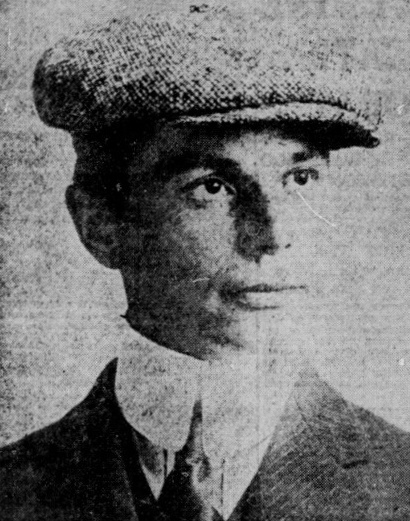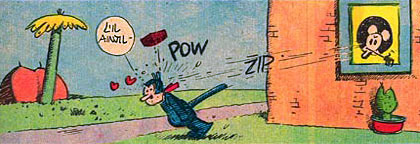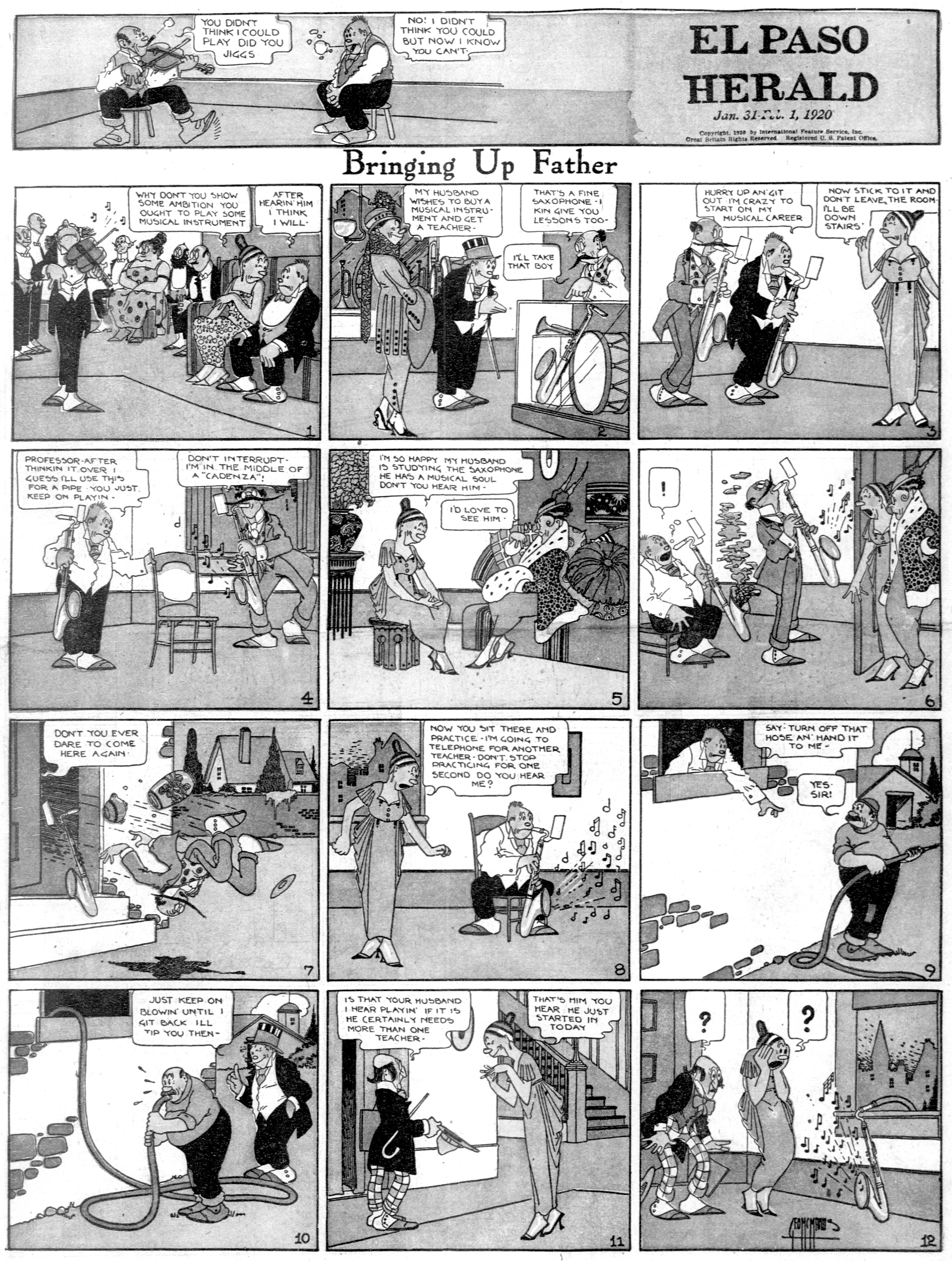|
Jo, Zette Et Jocko
''The Adventures of Jo, Zette and Jocko'' is a Franco-Belgian comics series created by Hergé, the writer-artist best known for ''The Adventures of Tintin''. The heroes of the series are two young children, brother and sister Jo and Zette Legrand, and their pet chimpanzee Jocko, plus their parents, Mr Legrand, Jo and Zette’s father, aerospace engineer and designer, and Mrs Legrand, Jo and Zette’s mother, housewife and Mr Legrand’s wife. Jo, Zette and Jocko appear on the rear covers of some ''The Adventures of Tintin'' comic books, but never appear in the stories. A few Jo, Zette and Jocko comics allude to characters or events in ''The Adventures of Tintin'', such as the Maharaja of Gopal (briefly mentioned in ''The Castafiore Emerald'') appearing as a prominent character, and a portrait of Captain Haddock in the Legrand house. Synopsis The following are the five ''Jo, Zette and Jocko'' titles, both in English and French, which are published between 1951 and 1957. Cha ... [...More Info...] [...Related Items...] OR: [Wikipedia] [Google] [Baidu] |
Hergé
Georges Prosper Remi (; 22 May 1907 – 3 March 1983), known by the pen name Hergé (; ), from the French pronunciation of his reversed initials ''RG'', was a Belgian cartoonist. He is best known for creating ''The Adventures of Tintin'', the series of Franco-Belgian comics#Formats, comic albums which are considered one of the most popular European comics of the 20th century. He was also responsible for two other well-known series, ''Quick & Flupke'' (1930–1940) and ''The Adventures of Jo, Zette and Jocko'' (1936–1957). His works were executed in his distinct ''ligne claire'' drawing style. Born to a lower-middle-class family in Etterbeek, Brussels, Hergé began his career by contributing illustrations to Scouting magazines, developing his first comic series, ''The Adventures of Totor'', for ''Le Boy-Scout Belge'' in 1926. Working for the conservative Catholic newspaper ''Le Vingtième Siècle'', he created ''The Adventures of Tintin'' in 1929 on the advice of its edito ... [...More Info...] [...Related Items...] OR: [Wikipedia] [Google] [Baidu] |
Maharajah
Mahārāja (; also spelled Maharajah, Maharaj) is a Sanskrit title for a "great ruler", "great king" or " high king". A few ruled states informally called empires, including ruler raja Sri Gupta, founder of the ancient Indian Gupta Empire, and Chandragupta Maurya. 'Title inflation' soon led to most being rather mediocre or even petty in real power, which led to compound titles (among other efforts) being used in an attempt to distinguish some among their ranks. The female equivalent, Maharani (or Maharanee, Mahārājñī, Maharajin), denotes either the wife of a Maharaja (or Maharana etc.) or also, in states where it was customary, a woman ruling without a husband. The widow of a Maharaja is known as a Rajmata, "queen mother". Maharajakumar generally denotes a son of a Maharaja, but more specific titulatures are often used at each court, including Yuvaraja for the heir (the crown prince). The form "Maharaj" (without "-a") indicates a separation of noble and religious office ... [...More Info...] [...Related Items...] OR: [Wikipedia] [Google] [Baidu] |
Cristero War
The Cristero War ( es, Guerra Cristera), also known as the Cristero Rebellion or es, La Cristiada, label=none, italics=no , was a widespread struggle in central and western Mexico from 1 August 1926 to 21 June 1929 in response to the implementation of secularism, secularist and anti-clericalism, anticlerical articles of the Constitution of Mexico, 1917 Constitution. The rebellion was instigated as a response to an executive decree by Mexican President Plutarco Elías Calles to strictly enforce Article 130 of the Constitution, a decision known as Calles Law. Calles sought to eliminate the power of the Catholic Church in Mexico, its affiliated organizations and to suppress popular religiosity. The rural uprising in north-central Mexico was tacitly supported by the Church hierarchy, and was aided by urban Catholic supporters. The Mexican Army received support from the United States. American Ambassador Dwight Morrow brokered negotiations between the Calles government and the Church ... [...More Info...] [...Related Items...] OR: [Wikipedia] [Google] [Baidu] |
Léon Degrelle
Léon Joseph Marie Ignace Degrelle (; 15 June 1906 – 31 March 1994) was a Belgian Walloon politician and Nazi collaborator. He rose to prominence in Belgium in the 1930s as the leader of the Rexist Party (Rex). During the German occupation of Belgium during World War II, he enlisted in the German army and fought in the Walloon Legion on the Eastern Front. After the collapse of the Nazi regime, Degrelle escaped and went into exile in Francoist Spain, where he remained a prominent figure in neo-Nazi politics. Degrelle was raised Catholic and during his years at university became involved in politics through journalism. In the early 1930s, he took control of a Catholic publishing house that morphed under his leadership into the Rexist Party. Rex contested the 1936 Belgian general election and won 11 percent of the vote, but slipped into irrelevance by the start of World War II. Degrelle began to collaborate with Nazi Germany as the war began and was detained by Belgian and the ... [...More Info...] [...Related Items...] OR: [Wikipedia] [Google] [Baidu] |
Katzenjammer Kids
''The Katzenjammer Kids'' is an American comic strip created by Rudolph Dirks in 1897 and later drawn by Harold Knerr for 35 years (1914 to 1949).Dirks profile "Born in Heide, Germany, Rudolph Dirks moved with his parents to Chicago at the age of seven." It debuted December 12, 1897, in the ''American Humorist'', the Sunday supplement of 's ''''. The comic strip was turned into a stage play in 1903. It inspired several animated cartoons and was one of 20 strips included in the |
Rudolph Dirks
Rudolph Dirks (February 26, 1877 – April 20, 1968) was one of the earliest and most noted comic strip artists, well known for ''The Katzenjammer Kids'' (later known as ''The Captain and the Kids''). Dirks was born in Heide, Germany, to Johannes and Margaretha Dirks. When he was seven years old, his father, a woodcarver, moved the family to Chicago, Illinois. After having sold various cartoons to local magazines Rudolph moved to New York City and found work as a cartoonist. His younger brother Gus soon followed his example. He held several jobs as an illustrator, which culminated in a position with William Randolph Hearst's ''New York Journal''. The circulation war between the ''Journal'' and Joseph Pulitzer's ''New York World'' was raging. The ''World'' had a huge success with the full-color Sunday feature, ''Down in Hogan's Alley'', better known as the ''Yellow Kid'', starting in 1895. Editor Rudolph Block asked Dirks to develop a Sunday comic based on Wilhelm Busch's caut ... [...More Info...] [...Related Items...] OR: [Wikipedia] [Google] [Baidu] |
Krazy Kat
''Krazy Kat'' (also known as ''Krazy & Ignatz'' in some reprints and compilations) is an US, American newspaper comic strip, by cartoonist George Herriman, which ran from 1913 to 1944. It first appeared in the ''New York Journal-American, New York Evening Journal'', whose owner, William Randolph Hearst, was a major booster for the strip throughout its run. The characters had been introduced previously in a side strip with Herriman's earlier creation, ''The Dingbat Family''. The phrase "Krazy Kat" originated there, said by the mouse by way of describing the cat. Set in a dreamlike portrayal of Herriman's vacation home of Coconino County, Arizona, ''Krazy'' mixture of offbeat surrealism, innocent playfulness and poetic, idiosyncratic language has made it a favorite of comics aficionados and art critics for more than 80 years.Shannon.McDonnell/O'Connell/De Havenon 26. The strip focuses on the curious relationship between a guileless, carefree, simple-minded cat named Krazy and a sho ... [...More Info...] [...Related Items...] OR: [Wikipedia] [Google] [Baidu] |
George Herriman
George Joseph Herriman III (August 22, 1880 – April 25, 1944) was an American cartoonist best known for the comic strip ''Krazy Kat'' (1913–1944). More influential than popular, ''Krazy Kat'' had an appreciative audience among those in the arts. Gilbert Seldes' article "The Krazy Kat Who Walks by Himself" was the earliest example of a critic from the high arts giving serious attention to a comic strip. ''The Comics Journal'' placed the strip first on its list of the greatest comics of the 20th century. Herriman's work has been a primary influence on cartoonists such as Elzie C. Segar, Will Eisner, Charles M. Schulz, Robert Crumb, Art Spiegelman, Bill Watterson, and Chris Ware. Herriman was born in New Orleans, Louisiana, to mixed-race Creole parents, and grew up in Los Angeles. After he graduated from high school in 1897, he worked in the newspaper industry as an illustrator and engraver. He moved on to cartooning and comic strips—a medium then in it ... [...More Info...] [...Related Items...] OR: [Wikipedia] [Google] [Baidu] |
Bringing Up Father
''Bringing Up Father'' is an American comic strip created by cartoonist George McManus. Distributed by King Features Syndicate, it ran for 87 years, from January 2, 1913, to May 28, 2000. The strip was later titled ''Jiggs and Maggie'' (or ''Maggie and Jiggs''), after its two main characters. According to McManus, he introduced these same characters in other strips as early as November 1911. Characters and story The humor centers on an immigrant Irishman named Jiggs, a former hod carrier who came into wealth in the United States by winning a million dollars in a sweepstakes. Now nouveau-riche, he still longs to revert to his former working class habits and lifestyle. His constant attempts to sneak out with his old gang of boisterous, rough-edged pals, eat New England boiled dinner, corned beef and cabbage (known regionally as "Jiggs dinner"), and hang out at the local tavern were often thwarted by Maggie, his formidable, social-climbing (and rolling-pin wielding) wikt:harridan ... [...More Info...] [...Related Items...] OR: [Wikipedia] [Google] [Baidu] |
George McManus
George McManus (January 23, 1884 – October 22, 1954) was an American cartoonist best known as the creator of Irish immigrant Jiggs and his wife Maggie, the main characters of his syndicated comic strip, ''Bringing Up Father''. Biography Born in St. Louis, Missouri, of Irish parents, McManus had an innate gift for drawing and a sense of humor. He recalled an incident when he was in high school: "My teacher sent home to my parents a picture I had drawn of a classmate named Sweeney. This'' is what your boy has been doing,' the teacher wrote, icily. I laid the note in Pop's lap and headed wearily for the woodshed. But Pop, instead, put on his hat and coat and went to the editor of ''The Republican''. He showed y drawing ofSweeney to the editor. Next day I had a job on ''The Republican'' at $5 a week—as an errand boy." At ''The Republican'', he created his first comic strip, ''Alma and Oliver''. In 1904, after winning $3000 at the racetrack, he went to New York City and a jo ... [...More Info...] [...Related Items...] OR: [Wikipedia] [Google] [Baidu] |
Quick & Flupke
''The exploits of Quick and Flupke'' (french: link=no, Quick et Flupke, gamins de Bruxelles, ) was a comics series by Belgian cartoonist Hergé. Serialised weekly from January 1930 to 1940 in , the children's supplement of conservative Belgian newspaper ("''The Twentieth Century''"), the series ran alongside Hergé's better known ''The Adventures of Tintin''. It continued for one extra year in ''Le Soir Jeunesse'' until 1941. It revolves around the lives of two misbehaving boys, Quick and Flupke, who live in Brussels, and the conflict that they get into with a local policeman. In 1983, the series provided the basis for an animated television adaptation. History Background Abbé Norbert Wallez appointed Hergé editor of a children's supplement for the Thursday issues of , titled ("''The Little Twentieth''"). Carrying strong Catholic and fascist messages, many of its passages were explicitly anti-semitic. For this new venture, Hergé illustrated ''L'Extraordinaire Aventure d ... [...More Info...] [...Related Items...] OR: [Wikipedia] [Google] [Baidu] |
Anti-semitism
Antisemitism (also spelled anti-semitism or anti-Semitism) is hostility to, prejudice towards, or discrimination against Jews. A person who holds such positions is called an antisemite. Antisemitism is considered to be a form of racism. Antisemitism has historically been manifested in many ways, ranging from expressions of hatred of or discrimination against individual Jews to organized pogroms by mobs, police forces, or genocide. Although the term did not come into common usage until the 19th century, it is also applied to previous and later anti-Jewish incidents. Notable instances of persecution include the Rhineland massacres preceding the First Crusade in 1096, the Edict of Expulsion from England in 1290, the 1348–1351 persecution of Jews during the Black Death, the massacres of Spanish Jews in 1391, the persecutions of the Spanish Inquisition, the expulsion from Spain in 1492, the Cossack massacres in Ukraine from 1648 to 1657, various anti-Jewish pogroms in the Rus ... [...More Info...] [...Related Items...] OR: [Wikipedia] [Google] [Baidu] |



.jpg)




